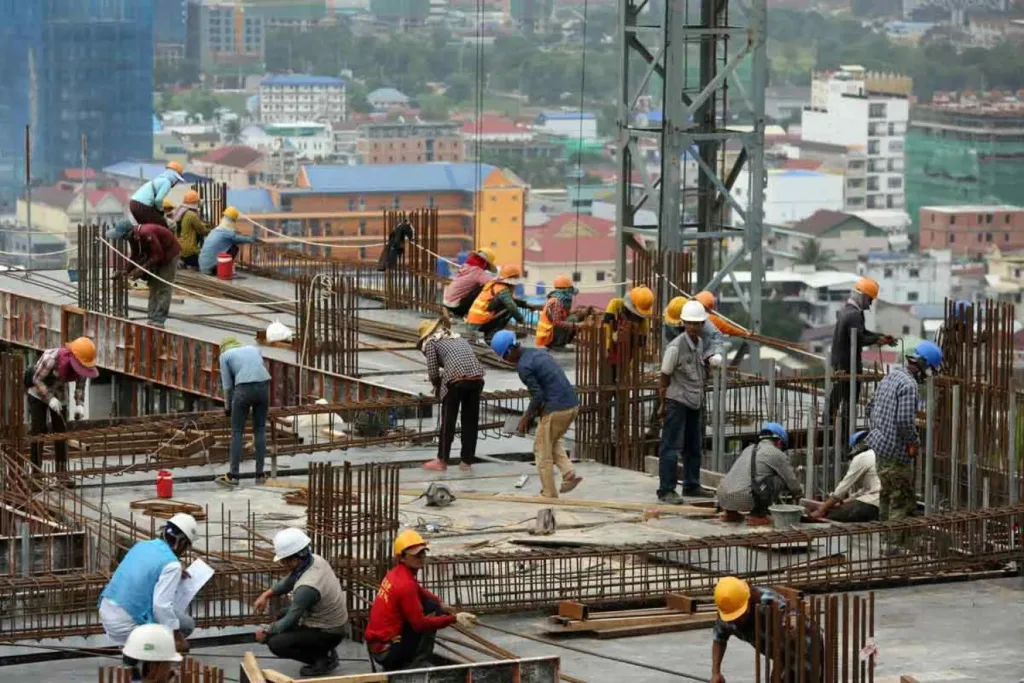Recent Posts
Labour Codes to Generate 77 Lakh Jobs and Boost Consumption: SBI Report

India’s labour landscape is set for a major transformation following the government’s notification of the four labour codes which include the Code on Wages the Industrial Relations Code the Code on Social Security and the Occupational Safety Health and Working Conditions Code. These reforms represent one of the most significant overhauls in India’s labour framework in many years. A new report from the State Bank of India suggests that their implementation could reshape employment patterns consumption levels and the broader economic environment.
According to the report India may witness the creation of nearly 77 lakh new jobs over the medium term. This projection is based on improved compliance simpler procedures and clearer regulations that encourage businesses to expand and hire more workers. The study adds that India’s unemployment rate currently at 3 point 2 percent could decline sharply. In the best case scenario it may fall to 1 point 9 percent reflecting stronger labour participation and more opportunities in both rural and urban regions.
Wage growth is expected to be another major outcome of the reforms. With the Code on Wages ensuring that all workers are entitled to uniform minimum wages the average daily disposable income is likely to rise by approximately 95 rupees per person. This increase in earnings could translate into a nationwide consumption boost of nearly 75000 crore rupees providing additional momentum to the economy.
The report highlights that formalisation of the labour force may rise significantly. India currently has about 44 crore workers in the unorganised sector with many of them registered on the e shram portal. As compliance becomes simpler and procedures become easier a shift from informal to formal employment is expected. The formal workforce could increase by more than 15 percent taking the overall formalisation rate to around 75 point 5 percent. This transition is likely to strengthen social security coverage which may reach 80 to 85 percent over the next few years.
The SBI report concludes that while the transition period may involve some adjustment for employers the long term advantages such as reduced compliance burden clearer rules and a more stable workforce will support economic growth and create a stronger labour market environment for India.
- 77 lakh jobs
- business compliance India
- Code on Wages
- consumption boost India
- economic expansion India
- economic reform India
- employment generation India
- formal workforce India
- India economic outlook
- India employment news
- Industrial Relations Code
- labour codes India
- labour market India
- labour policy India
- labour reforms India
- labour sector update
- minimum wage India
- SBI report
- Social Security Code
- social security India
- unemployment India
- unorganised sector India
- wage growth India
- worker welfare India
- workforce growth India
Recent Posts
Categories
- Acquisition1
- Airport14
- AP95
- Apartments119
- Bengaluru205
- Budget 202521
- Cement159
- Chennai424
- Construction869
- Construction Material Price Updates1
- Corporation4
- CREDAI61
- Editors Pick42
- Equipment43
- Events11
- Export20
- GST15
- Highways113
- Hotel13
- Housing198
- Hyderabad85
- import21
- India92
- Industrial364
- Infrastructure573
- Interiors28
- Iron Ore55
- Karnataka78
- Kerala53
- Labour1
- Land145
- Logistics33
- Market Updates369
- Metal92
- Metro107
- Mining67
- MSME19
- News1,828
- NHAI91
- Paints38
- Port1
- Power Shutdown1
- Properties95
- Puducherry11
- Railways6
- Real Estate720
- Road216
- Sand36
- Short News117
- SIPCOT10
- Steel Daily418
- Stocks29
- Tamil Nadu437
- Technology77
- Telangana86
- TIDCO5
- Trade44
- Trending News1,108
- Video2
- warehouse36
Related Articles
State Government Announces ₹2,000-Crore Urban Overhaul to Transform Vijayawada by 2029
The state government has launched a ₹2,000-crore plan to rebuild Vijayawada’s core...
BySamrita JosephNovember 27, 2025Blackstone Nears Majority Stake in Ritz-Carlton Bengaluru
Blackstone is set to acquire a majority stake in the prestigious Ritz-Carlton...
BySamrita JosephNovember 27, 2025Brigade Group Secures 90-Year Lease for Major IT Infrastructure Development in Technopark Phase I, Kerala
Brigade Group has signed a 90-year lease for 4.859 acres in Technopark...
BySamrita JosephNovember 27, 2025Serene Communities to Launch 3,000 Senior Homes Across Seven Cities with ₹2,500 Crore Investment
Serene Communities, the senior living brand of Columbia Pacific, is set to...
BySamrita JosephNovember 27, 2025














Leave a comment